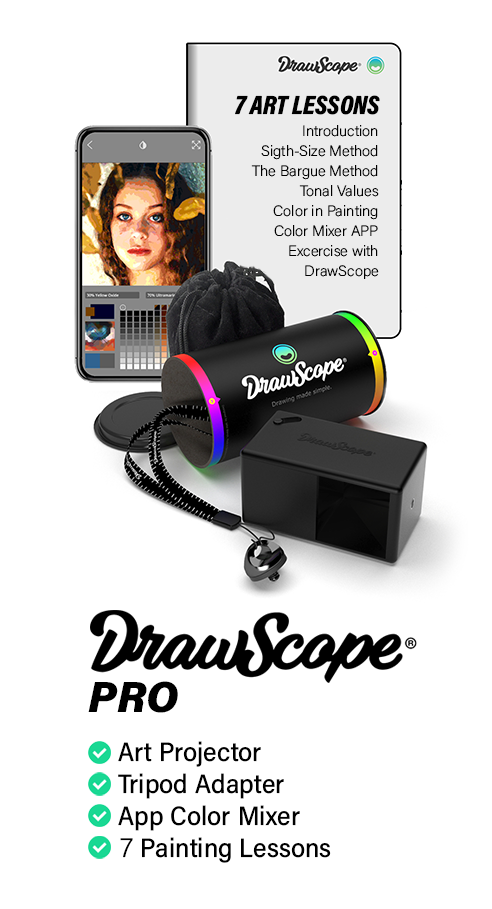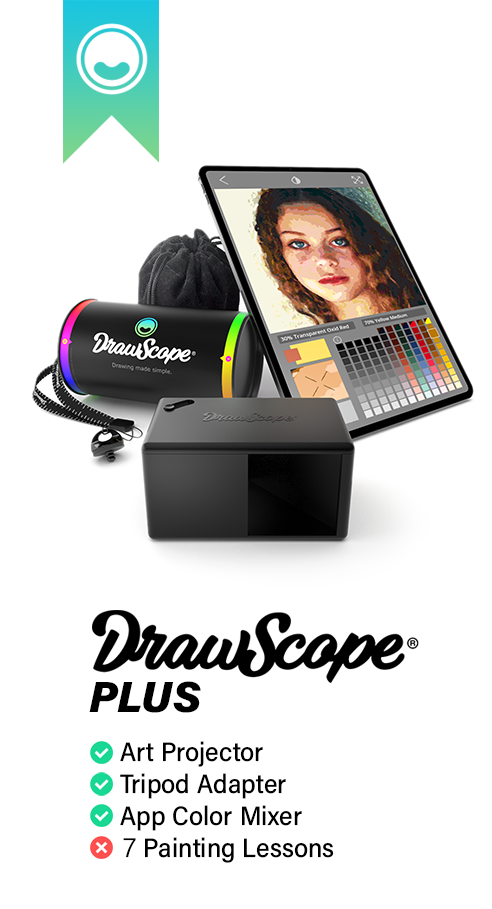More Than Just a "Prism on a Stick"
The camera lucida, a brainchild of William Hyde Wollaston patented in 1807, is often whimsically described as a "prism on a stick." While the stick part is straightforward, the prism's workings evoke curiosity. What kind of optical wizardry resides within that glassy cube? In this "Interlude," we delve into the camera lucida's optics, shedding light on the design choices behind the new DrawScope.

Dual Image Overlay: The Core Principle
The camera lucida's charm lies in its ability to overlay two distinct views: your subject (be it a landscape or a still life) and your drawing surface. This melding of visions allows for precise tracing of what's seen. Historically, camera lucidas followed two design schools: the "See-Through" design, leveraging glass and mirrors, and the "Split-Pupil" design, utilizing a solid glass prism.
The "See-Through" design, a more recent innovation, employs angled transparent or semi-transparent glass to superimpose reflections of your subject over your drawing paper. This principle is akin to the double images seen in glass storefronts under balanced lighting conditions. This design traces back to the 19th century and was adopted in devices like Alexander Alexander's "Graphic Mirror" around 1840.
However, this design isn't without its flaws. Lighting disparities between the scene and the paper can disrupt the image overlay, and the inherent lack of sharpness due to extra reflections from plate glass mirrors can compromise the clarity of the superimposed images.

The "Split-Pupil" Design: A Prism-Based Approach
The "Split-Pupil" design, Wollaston's original concept, positions a small prism in such a way that it splits the viewer's vision between the prism image and the drawing paper, creating an overlay of the two images. This design avoids unwanted reflections, ensuring a sharper image.

Right-Side-Up Viewing: A Key Feature
The simplest camera lucida designs, involving a single piece of glass, unfortunately display the subject upside-down. To circumvent this, most camera lucidas, employ prism-based designs that allow for right-side-up viewing. These designs ensure that the light undergoes two reflections before reaching the eye, effectively "double-inverting" the image back to its correct orientation.

The DrawScope Prism: A Nod to History
The DrawScope's prism enhances the design of historical prisms. One of the major drawbacks of the traditional Camera Lucida is that it cannot be used under any ambient lighting; it needs to be in very well-lit spaces to function correctly. Conversely, the DrawScope improves this system with a mirror prism, endowing this new version with the ability to work under any lighting condition.

DrawScoep's Legacy




